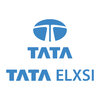
i
ITC Infotech
Filter interviews by
ITC Infotech Apriso Developer Interview Questions and Answers
ITC Infotech Apriso Developer Interview Experiences
1 interview found
I applied via Naukri.com and was interviewed before Feb 2023. There was 1 interview round.
(2 Questions)
- Q1. What is a Primary Key?
- Ans.
A primary key is a unique identifier for a record in a database table.
Primary key ensures each record in a table is unique.
It is used to establish relationships between tables.
Primary key can be a single column or a combination of columns.
It enforces data integrity and allows efficient data retrieval.
Example: In a table of students, the student ID can be the primary key.
- Q2. The PRIMARY KEY constraint uniquely identifies each row in a table. It must contain UNIQUE values and has an implicit NOT NULL constraint. A table in SQL is strictly restricted to have one and only one pri...
- Ans.
The PRIMARY KEY constraint uniquely identifies each row in a table and must contain unique values.
A primary key is a column or a combination of columns that uniquely identifies each row in a table.
It ensures data integrity by preventing duplicate or null values in the primary key column(s).
Primary keys are used to establish relationships between tables through foreign keys.
Primary keys can be composed of a single colum...
Skills evaluated in this interview
Top trending discussions






Interview questions from similar companies

I applied via Recruitment Consultant and was interviewed before Oct 2020. There was 1 interview round.
Interview Questionnaire
2 Questions
- Q1. What is Abstraction
- Q2. Concept of hiding implementation
Interview Preparation Tips

I applied via Campus Placement and was interviewed before Nov 2021. There were 2 interview rounds.
Best wishes to you know that you have to come to the day da
Hi sir I have sent the best for first year and all the best for your reference
Interview Preparation Tips

I applied via Naukri.com and was interviewed in Jul 2020. There were 3 interview rounds.
Interview Questionnaire
4 Questions
- Q1. Tell me about yourself?
- Ans.
I'm a passionate software developer with 5 years of experience in building scalable web applications and a strong focus on user experience.
Experience in full-stack development using technologies like React, Node.js, and MongoDB.
Led a team project that improved application performance by 30% through code optimization.
Strong background in Agile methodologies, having participated in multiple sprints and retrospectives.
Dev...
- Q2. What are your Strengths?
- Ans.
I excel in problem-solving, collaboration, and adaptability, which enhance my effectiveness as a software developer.
Strong problem-solving skills: I enjoy tackling complex coding challenges, like optimizing algorithms for better performance.
Effective collaboration: I have successfully worked in Agile teams, contributing to projects like a web application that improved user engagement.
Adaptability: I quickly learn new t...
- Q3. What are your Weakness?
- Ans.
I tend to be overly critical of my work, which can slow down my progress and affect my confidence in delivering projects.
I often spend too much time refining code, which can delay project timelines. For example, I once spent an extra week on a feature.
I sometimes struggle with delegation, preferring to handle tasks myself to ensure quality. This was evident in a group project where I took on too much.
I can be hesitant ...
- Q4. What are your salary expectations?
- Ans.
I am looking for a competitive salary that reflects my skills and experience in software development.
Based on my research, the average salary for a software developer in this region is between $80,000 and $100,000.
I have over 5 years of experience in full-stack development, which I believe warrants a salary towards the higher end of that range.
I am open to discussing the entire compensation package, including benefits ...
Interview Preparation Tips
Practice
Provide evidence &Data

Interview Questionnaire
1 Question
- Q1. What are the problems you face while developing software
- Ans.
Software development problems
Bugs and errors
Compatibility issues
Lack of documentation
Poor performance
Security vulnerabilities
Skills evaluated in this interview

I applied via Company Website and was interviewed before Jan 2021. There were 5 interview rounds.
Interview Questionnaire
3 Questions
- Q1. Tell me about yourself?
- Q2. Normalization concept,Java basics inheritance overloading, encapsulation ,update table ,related to projects in final year
- Q3. Situation based questions based on project
Interview Preparation Tips
All the Best😊😊

Interview Questionnaire
1 Question
- Q1. What should I learn for become software developer?

I applied via Company Website and was interviewed in Nov 2020. There were 3 interview rounds.
Interview Questionnaire
2 Questions
- Q1. Simple questions on oops
- Q2. Introduction
Interview Preparation Tips

Interview Questionnaire
1 Question
- Q1. Basic questions and more on db2

I applied via Campus Placement and was interviewed before Jul 2021. There were 3 interview rounds.
It was a basic quantitative reasoning aptitude test. Difficulty level was medium.
Coding test was kind of challenging for freshers. Difficulty level was medium to hard.
(2 Questions)
- Q1. Explain the functionality of linked list
- Ans.
Linked list is a data structure that stores elements in a linear order and allows dynamic memory allocation.
Consists of nodes that contain data and a pointer to the next node
Can be singly or doubly linked
Insertion and deletion can be done efficiently
Traversal is slower compared to arrays
Examples: stack, queue, hash table
- Q2. What are the 4 basic principles of OOPS?
- Ans.
The 4 basic principles of OOPS are Abstraction, Encapsulation, Inheritance, and Polymorphism.
Abstraction: Hiding complex implementation details and showing only necessary information.
Encapsulation: Binding data and functions together and restricting access to them.
Inheritance: Creating new classes from existing ones, inheriting properties and methods.
Polymorphism: Ability of objects to take on multiple forms or behavio...
Interview Preparation Tips
Skills evaluated in this interview
ITC Infotech Interview FAQs
Tell us how to improve this page.
ITC Infotech Interviews By Designations
- ITC Infotech Associate Information Technology Consultant Interview Questions
- ITC Infotech Lead Consultant Interview Questions
- ITC Infotech Associate Consultant Interview Questions
- ITC Infotech Software Developer Interview Questions
- ITC Infotech Associate IT Consultant 2 Interview Questions
- ITC Infotech IT Consultant Interview Questions
- ITC Infotech Software Engineer Interview Questions
- ITC Infotech Java Developer Interview Questions
- Show more
Interview Questions for Popular Designations
Overall Interview Experience Rating
based on 1 interview experience
Difficulty level
Duration
Interview Questions from Similar Companies
ITC Infotech Apriso Developer Reviews and Ratings
based on 3 reviews
Rating in categories
|
Associate Information Technology Consultant
5.1k
salaries
| ₹4.3 L/yr - ₹14.4 L/yr |
|
Lead Consultant
4.6k
salaries
| ₹16.4 L/yr - ₹30.5 L/yr |
|
Associate Consultant
958
salaries
| ₹2.5 L/yr - ₹18.4 L/yr |
|
Software Engineer
517
salaries
| ₹5 L/yr - ₹12 L/yr |
|
Senior Software Engineer
383
salaries
| ₹12.4 L/yr - ₹21 L/yr |

TCS

Mphasis

L&T Technology Services

Coforge
- Home >
- Interviews >
- ITC Infotech Interview Questions














